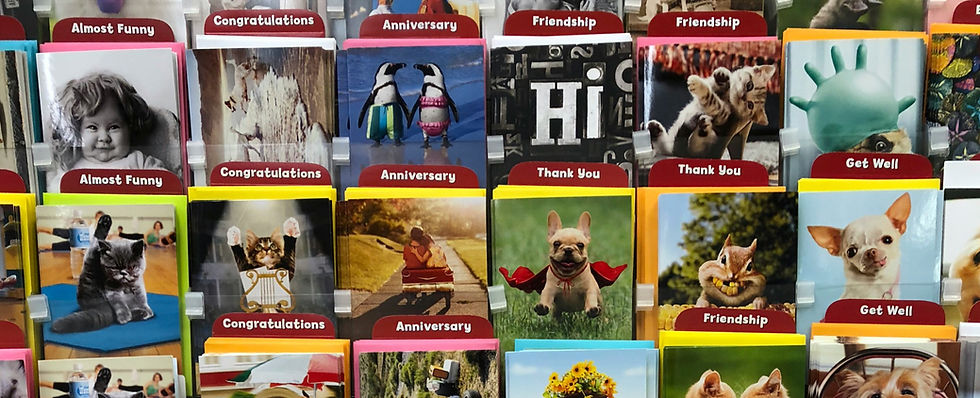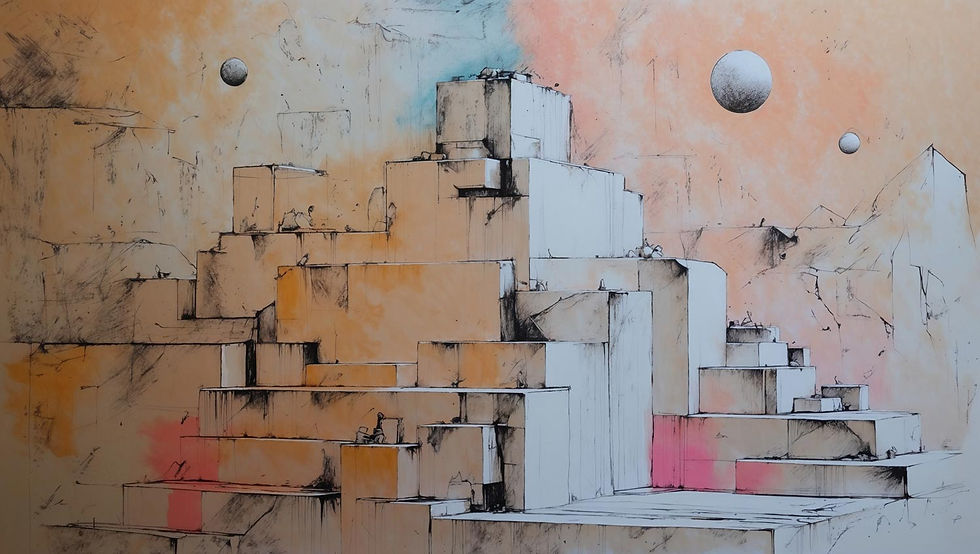After the Machines: Can Creative Work Survive the AI Age?
- Paul Francis

- Jul 30
- 3 min read
It started with a row of birthday cards.
While shopping at a local Tesco, I spotted a display full of birthday cards that didn’t look quite right. At first glance, they seemed like any other range of quirky illustrations and sentimental messages, but something was off. The characters had odd expressions, the hands and proportions weren’t quite human, and there was that unmistakable uncanny quality that comes from AI-generated art.

I work in the creative industry and regularly use tools like Leonardo AI. I recognised the signs immediately. Every single one of those cards had been made by a machine.
It was a quietly shocking moment. Not because AI art exists, we’ve all seen it by now, but because it has gone mainstream, tucked into a supermarket aisle where once there had been work by real illustrators and designers. The thought struck hard: this is already happening, and it’s happening faster than people realise.
But as creative work becomes cheaper to generate, a bigger question emerges: when most people have lost their jobs to AI, who will still have the money to buy what these companies are selling?
The Jobs at Risk
Freelance illustrators designing cards and similar products might typically earn between £30 and £250 per piece, depending on the client and usage. Over the course of a year, a dedicated freelancer might bring in between £25,000 and £35,000, though that varies with commissions and demand.
It’s not a high-income job, but it supports a wide network of creative professionals, from recent graduates to long-time freelancers. These are the very people now being undercut by companies using generative AI tools to produce hundreds of designs in hours.
AI-generated content is already appearing in online marketplaces, book covers, and even music videos. It’s a quiet revolution, and not one that has left much time for retraining or regulation.

If Jobs Go, What Happens Next?
The reality is simple: if creative workers lose their incomes, their ability to participate in the economy vanishes with it.
One widely discussed solution is Universal Basic Income (UBI). The concept involves giving every citizen a regular, unconditional payment to cover essential living costs. Trials in Finland, Canada and the United States have shown promising results. People were able to focus on long-term goals, retrain, or pursue creative work without the pressure of living month to month.
However, critics argue UBI could be expensive to sustain and difficult to fund without significant changes to taxation. Even so, in a world where AI threatens jobs across multiple industries, such support systems may soon become a necessity.
New Creative Roles With AI in the Loop
Some companies are working towards new hybrid roles. Instead of replacing creative professionals, they aim to involve them in the AI process.
Examples include:
AI Prompt Artists, who specialise in writing detailed inputs to guide AI tools.
Creative Curators, who review AI-generated work and refine it for production.
AI Trainers, often artists themselves, who help improve how generative models understand style and composition.
While these roles are still emerging, they offer a glimpse into a future where creativity doesn’t disappear, but shifts into new forms.
Protecting the Artists Who Came First
There’s growing pressure on governments and platforms to protect the rights of original artists. Most AI tools are trained on vast datasets scraped from the internet, often without consent.
Several lawsuits are already underway, challenging the legality of this training data. In response, the EU’s AI Act and similar legislation in the UK may soon require greater transparency, and even give artists the option to opt out of training datasets.
Some creatives are also calling for a royalties system. Just as musicians earn money when their songs are streamed, visual artists could receive micropayments when their style or content is used in an AI-generated image.
Consumer Power and the "Human Made" Movement
A growing number of consumers are beginning to notice when something is made by AI. In response, some companies are experimenting with Human Made labels, signalling when a product or design is created without AI tools.
This shift could give consumers the power to support real artists directly. Subscription platforms like Patreon and Ko-fi already allow for fan-driven support, and ethical marketplaces are beginning to highlight human creators.
But the movement needs wider awareness to have a lasting impact.
The Bigger Picture
No technology arrives in isolation. AI isn’t just changing how we work; it’s changing how we value work.
If companies can produce products without human labour, but also eliminate the spending power of the people they replaced, they risk breaking the cycle that keeps economies turning.
The Tesco card display was a small moment, but it points to a much larger shift. As a creative, it made me question where things are heading, and what it might take to ensure there’s still room for real human talent in the world ahead.
The machines are here. What happens next is up to us.








